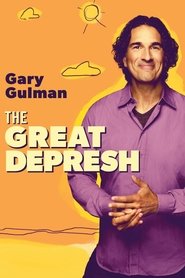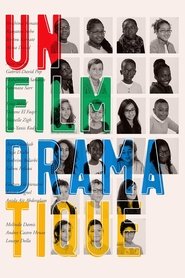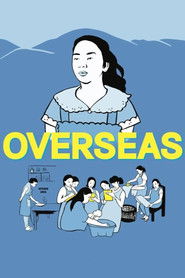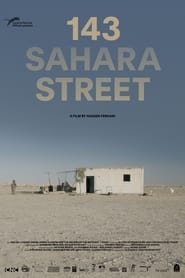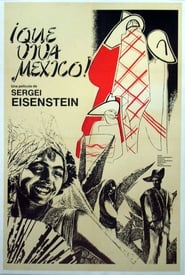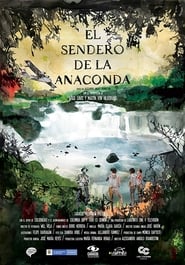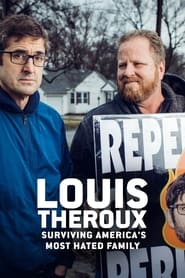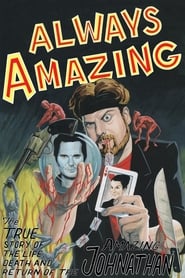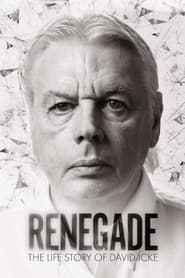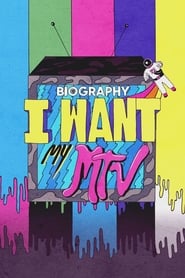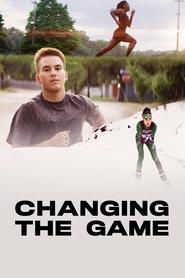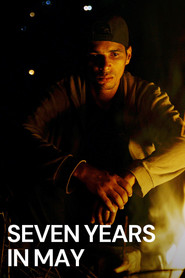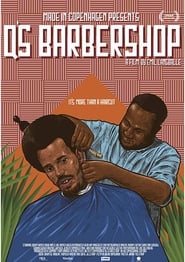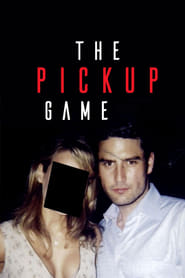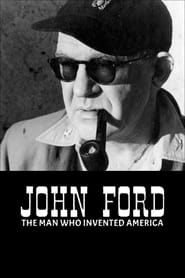Top Rated Documentary Movies - Page 330
-
Gary Gulman: The Great Depresh
2019
star 6.2In his first HBO comedy special, Gary Gulman offers candid reflections on his struggles with depression through stand-up and short documentary interludes. While speaking to issues of mental health, Gulman also offers his observations on a number of topics, including his admiration for Millennial attitudes toward bullying, the intersection of masculinity and sports, and how his mother's voice is always in his head. -
Cenote
2020
Cenote
2020
star 5Cenotes—sources of water that in ancient Mayan civilization were said to connect the real world and the afterlife. The past and present of the people living in and around them intersect, and distant memories echo throughout immersive scenes of light and darkness. -
Nazis on Drugs: Hitler and the Blitzkrieg
2019
star 6.2For all its talk of racial, spiritual, and physical purity, the self-anointed “Master Race” harbored a secret…theirs was an axis of drug addicts. This two-hour special explores the origin, impact, and lasting effects of the state-sponsored drug use that helped build—and eventually burned—the Third Reich. Incredible new sources of information, including a detailed journal maintained by Hitler’s personal physician, reveal the extent of not just his, but the entire Nazi Party’s reliance on drugs to power their war effort. -
A Dramatic Film
2019
A Dramatic Film
2019
star 6.8Artist and filmmaker Eric Baudelaire spent four years interacting with the pupils of a film class, at a secondary school in the Parisian suburb of Saint-Denis. Keeping himself on the sidelines, he gives way to the children to express their thoughts and dreams. Their remarks are intuitive, inquisitive, yet passionate and surprisingly mature, concerning rocky and complicated issues, ranging from racism, immigration, and identity, all the way to the possibilities of film as a medium. As time flows almost unnoticed, it is evident that these children have not only become the co-directors of this film but also the heroes of their own lives. -
Overseas
2019
Overseas
2019
star 7.1In the Philippines, women get deployed abroad to work as domestic workers or nannies. In one of the many training centers dedicated to domestic work, a group of trainees are getting ready to face both homesickness and the possible abuses lying ahead during a series of role-playing exercises. -
143 Sahara Street
2021
143 Sahara Street
2021
star 7Alone in a small white house on the edge of national road 1, the Trans-Saharan road, which connects Algiers to Tamanrasset crossing the immensity of the desert, Malika, 74, one day opened her door to the director Hassen Ferhani, who came there to scout with his friend Chawki Amari, journalist at El Watan and author of the story Nationale 1 which relates his journey on this north-south axis of more than 2000 km. The Malika of Amari's novel, which Ferhani admits to having first perceived as a "literary fantasy", suddenly takes on an unsuspected human depth in this environment naturally hostile to man. She lends herself to the film project as she welcomes her clients, with an economy of gestures and words, an impression reinforced by the mystery that surrounds her and the rare elements of her biography which suggest that she is not from the region, that she left the fertile north of Algeria to settle in the desert where she lives with a dog and a cat. -
Hurray Mexico!
1932
Hurray Mexico!
1932
star 7.1Unedited film that Sergei Eisenstein, Grigoriy Aleksandrov and Eduard Tisse shot in Mexico 1931-32. This record only represents the 200,000-plus feet of unedited film that Sergei Eisenstein, Grigoriy Aleksandrov and Eduard Tisse shot in Mexico 1931/32 for Mary and Upton Sinclair and three American co-financiers. It was Eisenstein's vision to end up with movie about Mexico in six parts called "Calavera", "Sandunga", "Maguey", "Fiesta", "Soldadera", and "Epilogue". The project was canceled before it was completed due to cost overruns and months-delayed completion, and the producers refused to let Eisenstein attempt to edit anything from the material he had finished after Iosif Stalin called him back to the USSR. From this footage the following pictures were subsequently edited by other hands: Thunder Over Mexico (1933), Eisenstein in Mexico (1933), Death Day (1934), Time in the Sun (1940), and Que Viva Mexico (1979). -
El Sendero de la Anaconda
2019
star 5.8In the most remote areas of the Amazon rainforest, a writer and his anthropologist friend find communities that have resisted change for centuries. -
Louis Theroux: Surviving America’s Most Hated Family
2019
star 7.7Louis returns to visit the Westboro Baptist Church in the wake of the death of its leader. -
Gaza Fights for Freedom
2019
star 8Gaza Fights for Freedom depicts the ongoing Great March of Return protests in the Gaza Strip, occupied Palestine, that began in 2018. -
Always Amazing
2018
Always Amazing
2018
star 6.7Always Amazing is the story of The Amazing Johnathan’s storied career as a comedian/magician, the unlikely friendship that was cemented after meeting a 12-year-old boy while on tour in Australia and the unfortunate terminal diagnosis that brought them back together for one last run of shows. -
Liberty: Mother of Exiles
2019
star 7.5A look at the history of the Statue of Liberty and the meaning of sculptor Auguste Bartholdi's creation to people around the world. -
Renegade: The Life Story of David Icke
2019
star 5.1A Feature Documentary, featuring David Icke The 'mad man' who has been proved right again and again and again. David Icke has been warning for nearly 30 years of a coming global Orwellian state in which a tiny few would enslave humanity through control of finance, government, media and a military-police Gestapo overseeing 24/7 surveillance of a micro-chipped population. They called him 'crazy', 'insane', a 'lunatic', and he was subjected to decades of ridicule, dismissal and abuse. Oh, but how things change. Today his books are read all over the world and his speaking events are watched by thousands on every continent. Why? Because what he has been so derided for saying is now happening in world events and even mainstream scientists are concluding that reality is indeed a simulation. Almost every day something that David Icke said long ago is supported by happenings and evidence. As Mahatma Gandhi said: 'First they ignore you, then they laugh at you, then they fight you, then you win. -
I Want My MTV
2019
I Want My MTV
2019
star 7.5The film is about the formation of a music channel that has shaped modern pop culture. On August 1, 1981, the life of a whole generation of Americans changed forever - on this day MTV began its broadcasting day, making VJ a new teen hero and creating a canon of music video as a vivid artistic statement. -
Changing the Game
2019
Changing the Game
2019
star 6.3Transgender high school athletes from across the country compete at the top of their fields, while also challenging the boundaries and perceptions of fairness and discrimination. -
In My Blood It Runs
2019
In My Blood It Runs
2019
star 8The story of Dujuan, a 10-year-old Aboriginal boy living in Alice Springs, Australia, who is struggling to balance his traditional Arrernte/Garrwa upbringing with a state education. -
Seven Years in May
2019
Seven Years in May
2019
star 7.4One night seven years ago, Rafael came home after work and discovered that people he did not know had come looking for him. He immediately fled, without looking back. From that moment on, his life changed, as if that night had never ended. One evening, around an improvised fire near a factory, he decides to confide his journey to a stranger. Rafael’s intimate account meets the collective testimony of an entire nation oppressed by poverty, police repression and institutional corruption. -
Q's Barbershop
2019
Q's Barbershop
2019
star 5.5A colourful, upbeat tale from Vollsmose about the resourceful and funky hairdresser Qasim, who instils dignity, inspiration and hope in young people through something we can all relate to – a cool haircut! -
The Pickup Game
2019
The Pickup Game
2019
star 6.6Generating over a billion dollars a year, the pickup industry is shocking, secretive and—to put it politely—scummy. Built upon myths and manipulation, expensive workshops and training videos push an agenda that women are biologically attracted to alpha males. If men can learn techniques to overcome their shyness and become socially dominant, they'll be 21st-century Casanovas. At least, that's what the brochure says. Ross Jeffries's 1992 self-published book How to Get the Women You Desire into Bed inspired a generation of macho men to push their techniques with aggressive online marketing. With insider access to the movement's founders and current leaders, this riveting exposé dismantles the "date and mate" methods hustled by modern snake-oil salesmen. From chat rooms to conference halls, these self-help-styled seminars are poised to take advantage of anyone desperate enough to fall for their dangerous promises. -
John Ford: The Man Who Invented America
2019
star 6.5Over a 50-year career and more than a hundred movies, filmmaker John Ford (1894-1973) forged the legend of the Far West. By giving a face to the underprivileged, from humble cowboys to persecuted minorities, he revealed like no one else the great social divisions that existed and still exist in the United States. More than four decades after his death, what remains of his legacy and humanistic values in the memory of those who love his work?
 Netflix
Netflix
 Amazon Prime Video
Amazon Prime Video
 Apple iTunes
Apple iTunes
 Apple TV Plus
Apple TV Plus
 Disney Plus
Disney Plus
 Google Play Movies
Google Play Movies
 Paramount Plus
Paramount Plus
 Hulu
Hulu
 HBO Max
HBO Max
 YouTube
YouTube
 fuboTV
fuboTV
 Peacock
Peacock
 Peacock Premium
Peacock Premium
 Amazon Video
Amazon Video
 The Roku Channel
The Roku Channel
 AMC+
AMC+
 Kocowa
Kocowa
 Hoopla
Hoopla
 The CW
The CW
 Vudu
Vudu
 Starz
Starz
 Showtime
Showtime
 PBS
PBS
 Pantaflix
Pantaflix
 FXNow
FXNow
 Tubi TV
Tubi TV
 Kanopy
Kanopy
 Comedy Central
Comedy Central
 Crunchyroll
Crunchyroll
 Microsoft Store
Microsoft Store
 Redbox
Redbox
 Sun Nxt
Sun Nxt
 ABC
ABC
 DIRECTV
DIRECTV
 Crackle
Crackle
 Fandor
Fandor
 Plex
Plex
